
As we all know, gemstones, nature’s precious gifts, are each formed under harsh natural conditions, “growing” over countless years before being painstakingly excavated by humans.
Different gemstones have their unique growth environments, which contribute to their distinctive characteristics. The unique features of each gemstone are the result of an unimaginable number of years of refinement. Today, let’s explore how the age of a gemstone is determined!
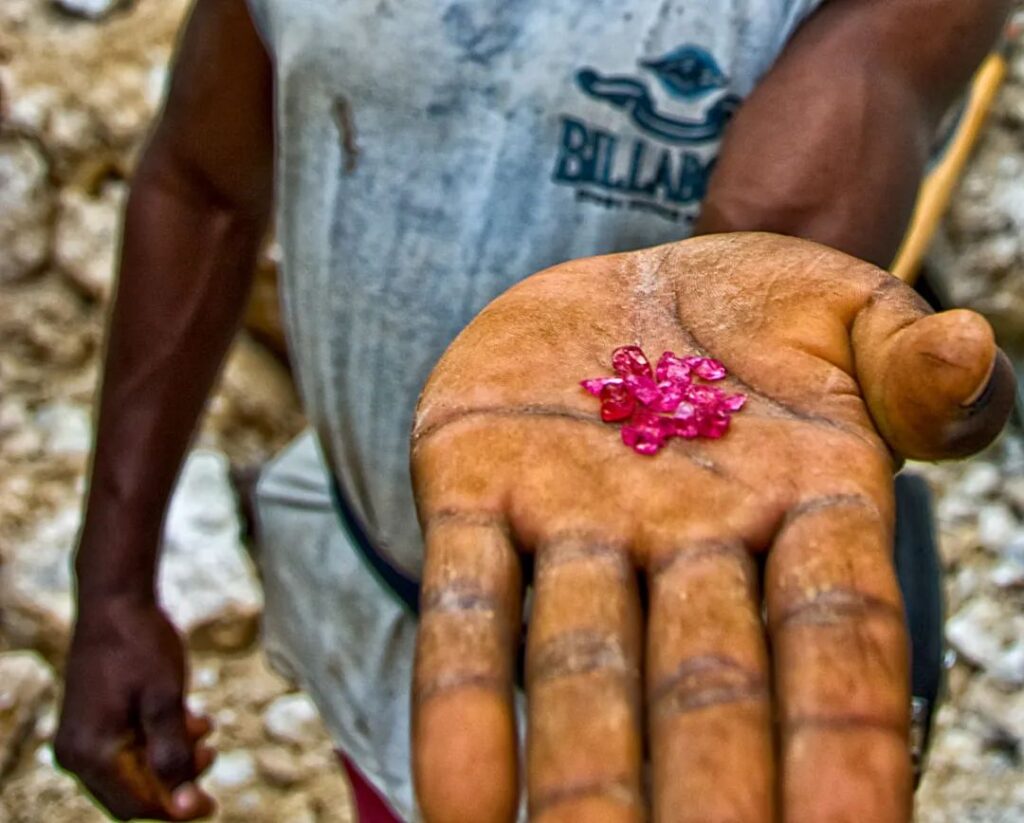
Radiometric dating is an effective scientific method in geochronology (earth science) and archaeology. Many studies emphasize the use of radioactive decay U-Pb, K-Ar (and many other) isotope dating methods for geological age determination, and the use of radiocarbon-14 (which you’ve likely heard of) for dating ancient to prehistoric biological materials (such as bones and shells). In gemology, age determination as an analytical method is still quite limited in application, despite groundbreaking results published many years ago.

With the latest advancements in analytical capabilities, we can now perform radiometric age dating on a large number of gemstone samples within a few months, partly from our research collections, but mostly from our tests on inorganic and organic gemstones (pearls and corals) from clients.
In the context of gemological laboratories, radiometric dating of gemstones or their inclusions is often a very useful complement to the data obtained from conventional gemstone testing. It may support conclusions drawn from other tests, or even provide crucial information without which conclusions would be impossible.
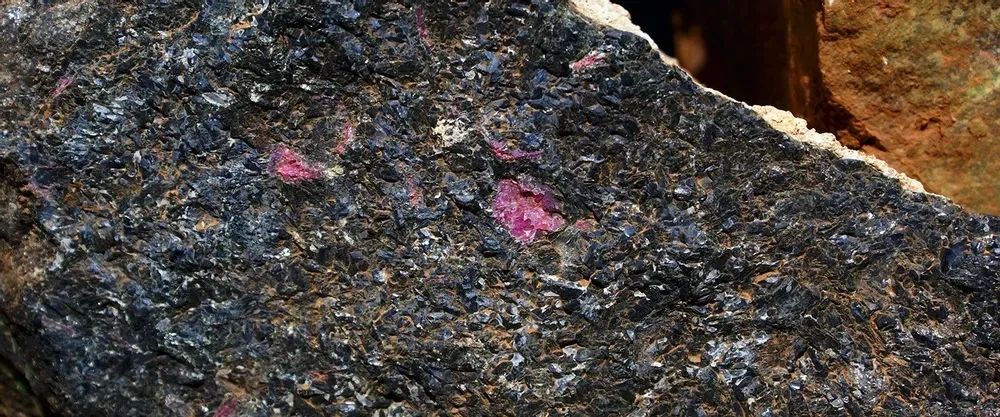
For gemstones, radiometric age dating is particularly useful in cases where the origin of the gemstone is in question, as it can be confirmed by knowing the formation age of the gemstone. Such dating may indicate that the gemstone is very old, i.e., associated with geological events from the Neoproterozoic to early Paleozoic 1 to 0.5 billion years ago, such as many gemstones from Madagascar, East Africa, or Sri Lanka.
Alternatively, it may ultimately indicate that the gemstone is much younger, i.e., associated with Cenozoic geological events from 65 to 1 million years ago, such as sapphires from Kashmir or gemstones from Mogok, Myanmar (see image below). Clearly, age dating – if applicable – is crucial for laboratory gemologists, for example, to determine whether a velvety blue sapphire comes from Kashmir or Madagascar. The only drawback to dating gemstones is that in most cases, it is only possible when the gemstone has tiny surface inclusions.
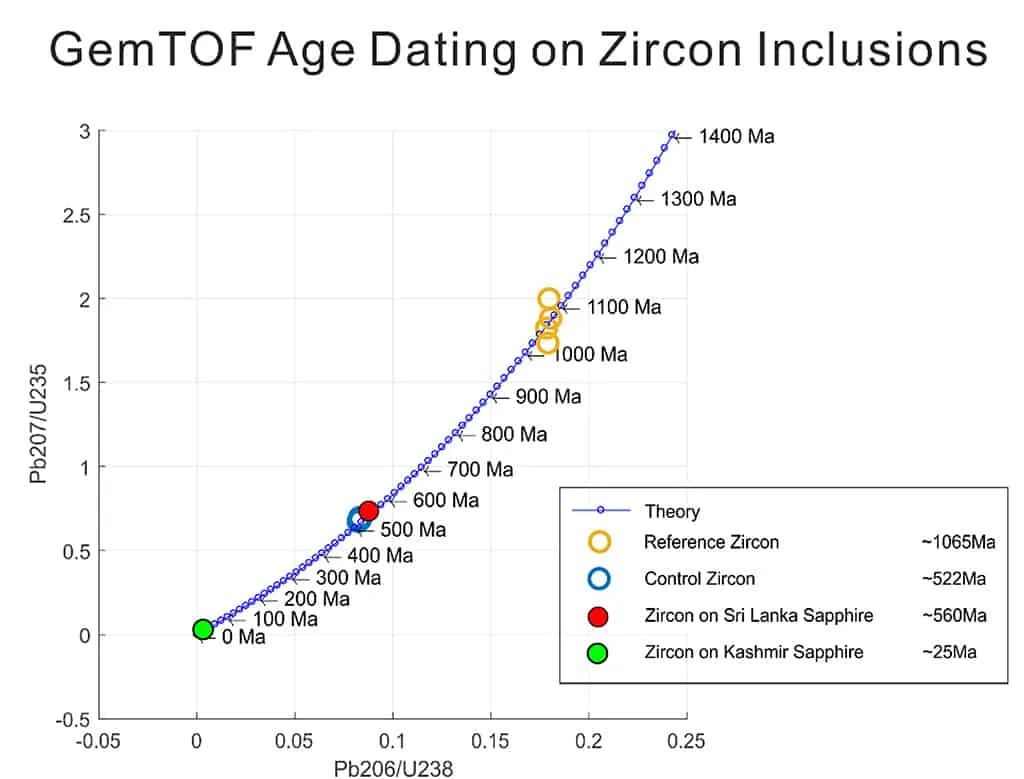
For example, in the image above, zircon inclusions in Kashmir sapphires and Sri Lankan sapphires were dated to 25 million years and 560 million years respectively, when compared to reference zircon age dating results!
When applying radiocarbon dating to organic gemstones such as pearls, it’s possible to confirm the historical age (origin) information of the pearl. Additionally, based on the formation age before pearl cultivation, this can serve as a reference to determine whether a pearl is natural or not.
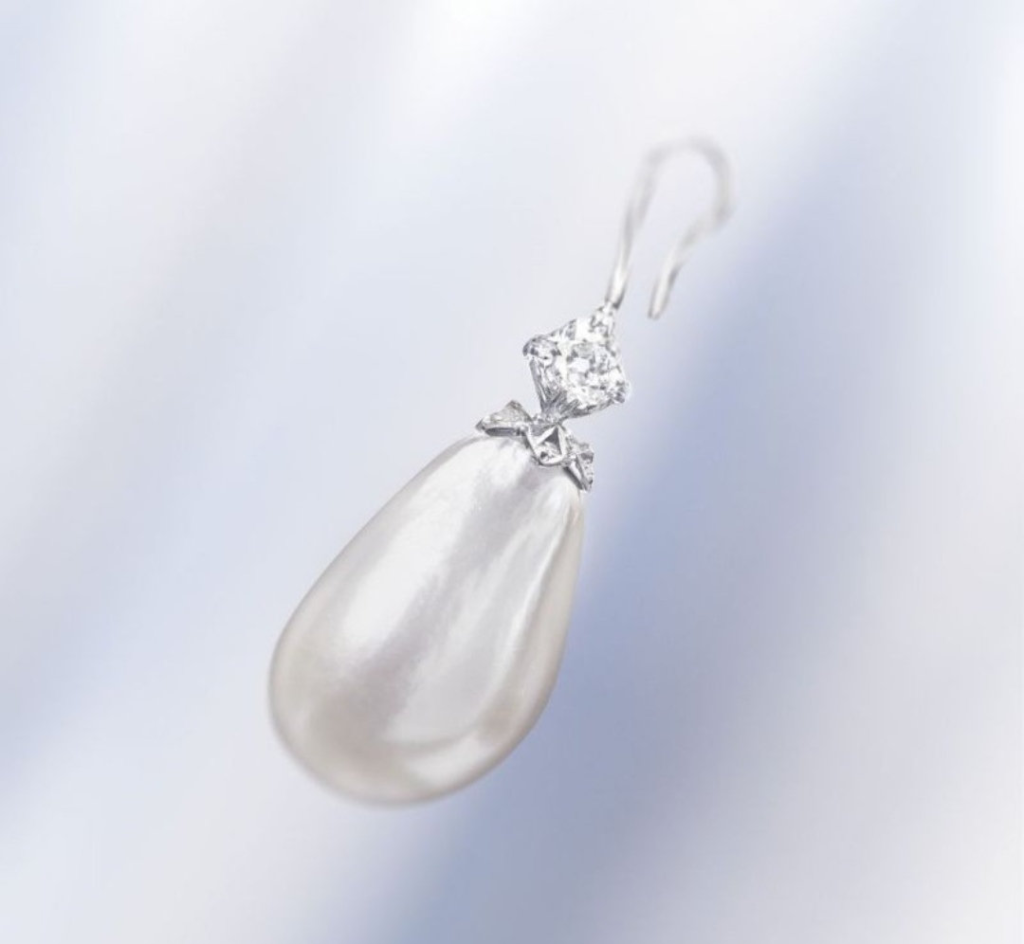
Let’s take an example of a pearl with a long history, the “Ana Maria“. Analysis by SSEF confirmed that this pearl (possibly from a species of mollusk called Pinctada mazatlanica) was formed between the early 16th century and the late 17th century. The age dating provided evidence supporting its documented historical provenance.
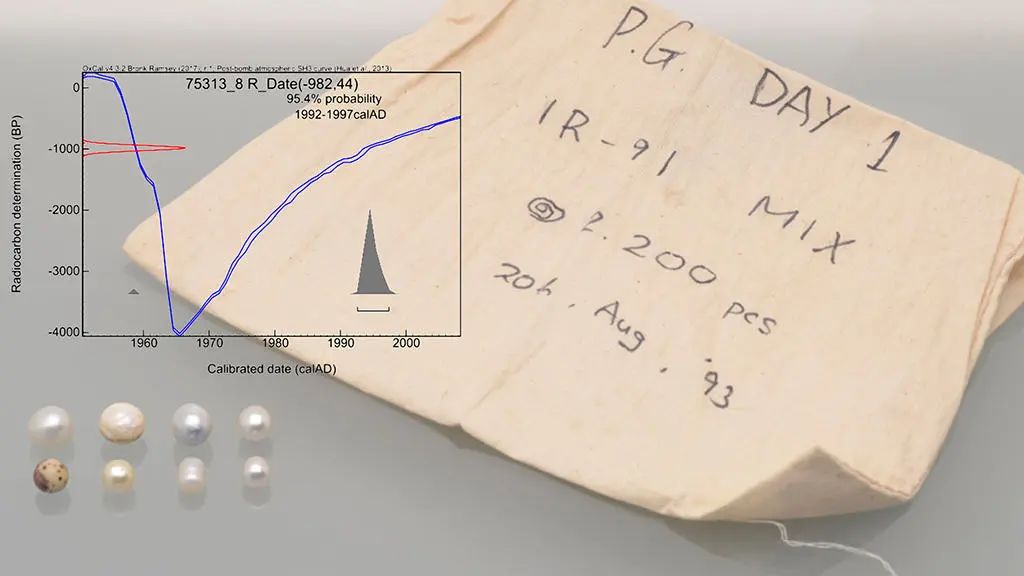
Age dating is also useful for a pearl with an internal structure similar to a non-nucleated cultured pearl. According to radiocarbon analysis, “Ana Maria” could be identified as a natural saltwater pearl, dating back to the late 17th to mid-19th century, long before the development of commercial pearl cultivation. Furthermore, studies on cultured pearls from Australia have also been successful over the past thirty years (see image above).
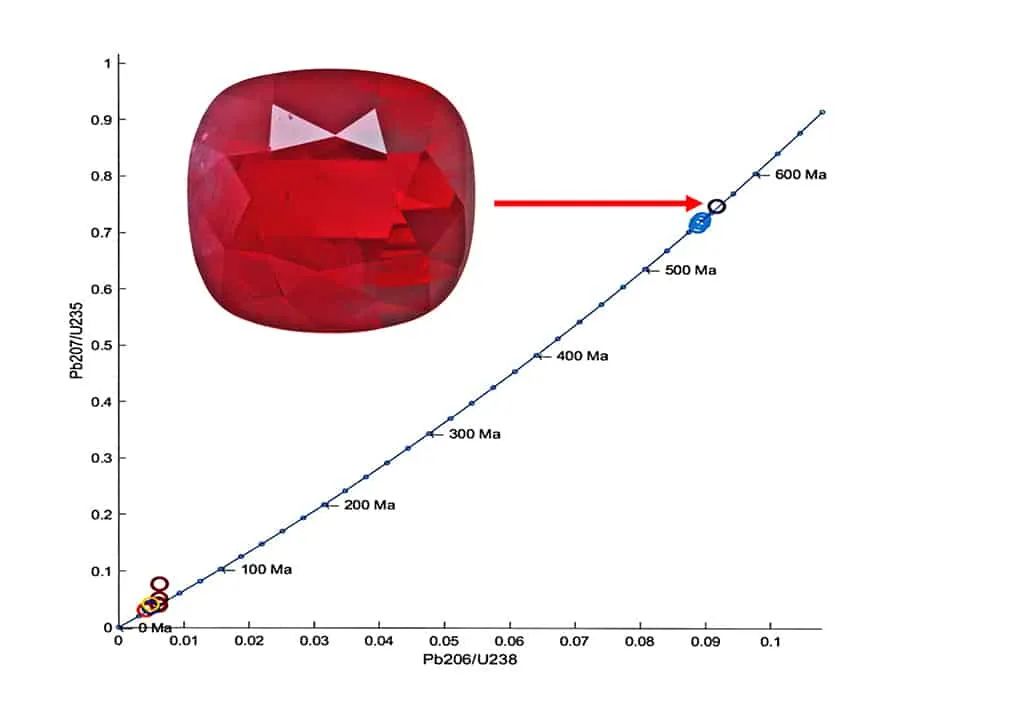
Let’s look at another case where the origin could only be determined by combining classical methods (microscopy, chemical composition, and spectroscopy) with radiometric dating. The 5.1-carat ruby shown above originated from a marble deposit and displayed Myanmar-type inclusions. Based on the geologically “ancient” U-Pb age (565 million years) of a tiny zircon inclusion, we were able to rule out Myanmar (and other Himalayan-related deposits) as the origin and ultimately determine that the ruby originated from East Africa, as the calculated age closely matches the formation age of rubies in marbles from the East African Mozambique Belt.
According to SSEF research, age dating is a very promising tool that will become increasingly important in future gemstone testing. As described above, it provides additional and unique information that can effectively help determine the origin of gemstones.
The Hidden Age of Your Jewels: Unveiling the Ancient Secrets of Your Gemstones!
Tweet





